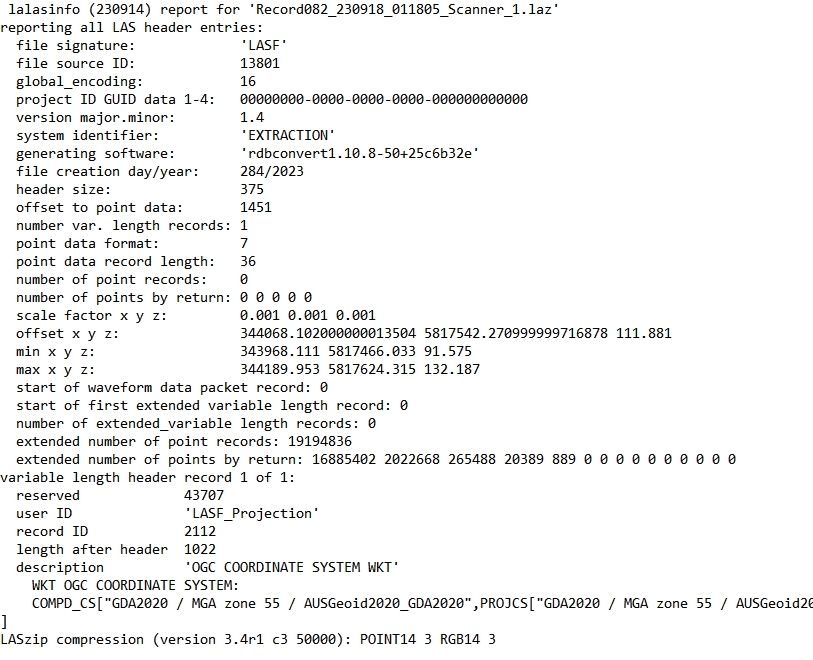Hi all,
I wish to be able to read the LAS/LAZ header information in FME. Does anyone know how to do this? The information is not any of the attributes I can expose.
I only need the header information and not the actual point cloud if possible. This screenshot is an example of the information I am looking for using another program lasinfo I'm guessing if this is possible then python will be needed. I do not know any python
I'm guessing if this is possible then python will be needed. I do not know any python
Any answers would be appreciated








